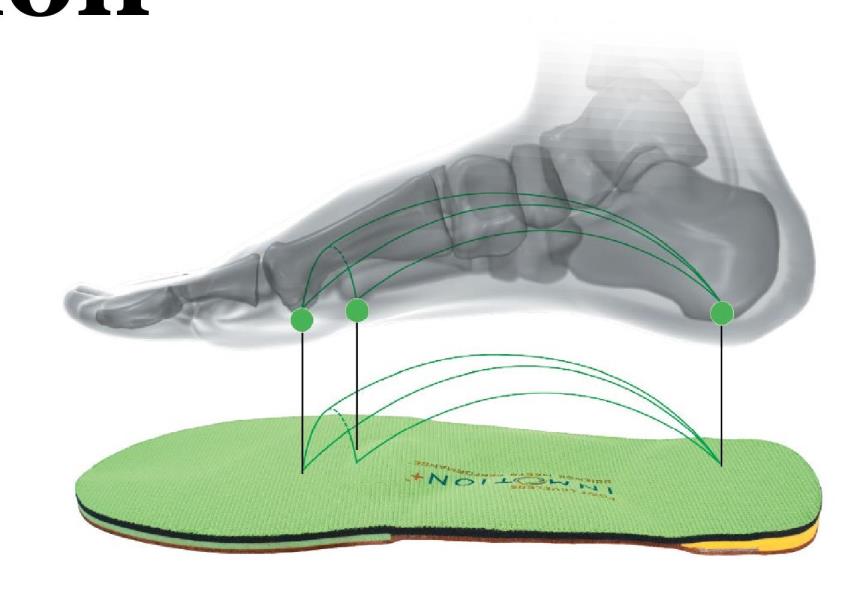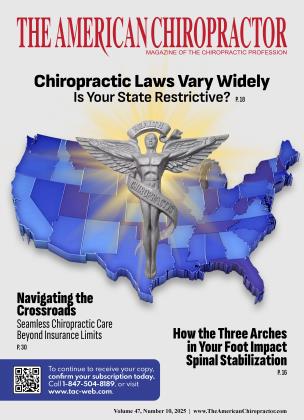
THE HUMAN FOOT IS A COMPLEX STRUCTURE comprising 26 bones, 33 joints, and over 100 muscles, tendons, and ligaments. Central to its function are three arches — medial longitudinal arch, lateral longitudinal arch, and transverse arch.
These arches facilitate movement, absorb shock, and play a pivotal role in maintaining spinal stability. Understanding the interplay between these arches and spinal health is essential for both clinicians and individuals aiming to optimize musculoskeletal well-being.
1. Medial longitudinal arch: This is the most prominent arch, running along the inner side of the foot from the heel to the forefoot. It comprises the calcaneus, talus, navicular, three cuneiforms, and the first three metatarsals. This arch is crucial for shock absorption during activities like walking and running.
2. Lateral longitudinal arch: Located on the outer side of the foot, this arch is flatter and consists of the calcaneus, cuboid, and the fourth and fifth metatarsals. It provides stability and balance, especially during weight-bearing activities.
3. Transverse arch: This arch runs across the midfoot and includes the metatarsal bases, the cuboid, and the three cuneiform bones. It helps distribute body weight across the foot and maintains balance during movement.
Collectively, these three arches form the plantar vault, a structural design adept at supporting weight and accommodating high loads while retaining flexibility. This configuration ensures that the foot can adapt to various terrains and activities, providing a stable foundation for the entire body.
The foot’s arches serve as the body’s foundation, influencing posture, gait, and overall alignment. When these arches function optimally, they facilitate proper weight distribution and absorb mechanical shocks, thereby supporting spinal stability:
1. Shock absorption and force distribution: During activities such as walking or running, the arches absorb and dissipate forces exerted on the foot. Proper arch function ensures that these forces are evenly distributed, minimizing undue stress on the ankles, knees, hips, and spine.
2. Postural alignment: The alignment of the foot’s arches significantly impacts the positioning of the legs and pelvis. Collapsed or weakened arches can lead to misalignments, causing compensatory changes in posture that affect spinal alignment and stability.
3. Kinetic chain function: The body operates as a kinetic chain, where movement or dysfunction in one segment influences others. The arches play a crucial role in this chain by supporting healthy movement and weight-bearing. Dysfunctional arches can disrupt this chain, leading to spinal instability and associated discomfort.
“Proper arch function ensures that these forces are evenly distributed, minimizing undue stress on the ankles, knees, hips, and spine.”
When the foot’s arches are compromised because of factors such as injury, overpronation, or structural anomalies, the body’s biomechanics are adversely affected, leading to potential spinal issues:
1. Overpronation and supination: Excessive inward (pronation) or outward (supination) rolling of the foot alters the natural alignment of the lower limbs. This misalignment can propagate upward, causing pelvic tilt and spinal curvature abnormalities, such as functional scoliosis.
2. Increased lumbar stress: Faulty foot mechanics can lead to improper gait patterns, resulting in increased stress on the lumbar spine. Over time, this can contribute to chronic lower back pain and degenerative spinal conditions.
3. Pelvic instability: The arches’ alignment influences pelvic positioning. Dysfunctional arches can lead to pelvic instability, which compromises the spine’s structural integrity and predisposes individuals to injuries.
Custom orthotics, such as the ones provided by Foot Levelers, are designed to support all three arches of the foot, thereby promoting optimal alignment and function:
1. Comprehensive arch support: Foot Levelers’ orthotics are uniquely crafted to bolster the medial, lateral, and transverse arches, ensuring a balanced foundation that supports the entire musculoskeletal system.
2. Enhanced postural alignment: By stabilizing the foot’s arches, these orthotics facilitate proper posture, reducing compensatory movements that can lead to spinal misalignments.
3. Dynamic functionality: The custom design of Foot Levelers’ orthotics accommodates individual foot anatomy and biomechanics, providing dynamic support that adapts to various activities and terrains, thereby enhancing overall spinal stability.
Several studies have demonstrated the efficacy of custom orthotics in improving foot function and alleviating spinal discomfort:
• Research indicates that custom-made, flexible orthotics can significantly improve the alignment of the arches when standing, thereby enhancing overall posture and reducing spinal stress.
• Patients with functional scoliosis have shown improvements through the use of orthotics that support all three arches, highlighting the interconnectedness of foot mechanics and spinal health.
The intricate architecture of the three arches of the foot plays a fundamental role in maintaining spinal stability. Proper arch function ensures effective shock absorption, balanced posture, and seamless kinetic chain operations. Conversely, arch dysfunction can lead to a cascade of musculoskeletal issues, culminating in compromised spinal health.

Dr. Kurt A. Juergens attended Brigham Young University and graduated from Texas Chiropractic College. He owns Juergens Chiropractic & Sports Rehab Center in Houston, Texas, where he continues to treat high school and professional athletes from all fields worldwide. He has been a member of the sports medicine team for the United States Olympic Track and Field Trials, the NCAA Track and Field Championships, the ATP’s Tennis Masters Cup, and the U.S. Clay Court Championships. As a Foot Levelers Speakers Bureau member, Dr. Juergens travels the country speaking on chiropractic topics with a focus on sports medicine. Learn more at Footevelers.com/ why-custom-orthotics/arch-support.
 View Full Issue
View Full Issue









